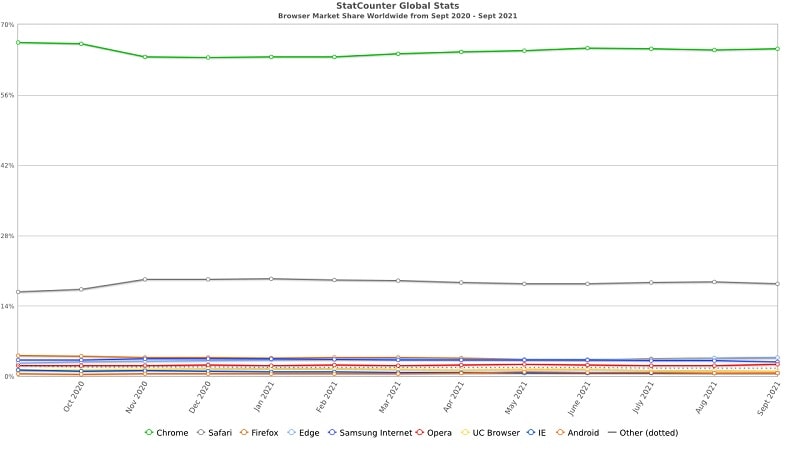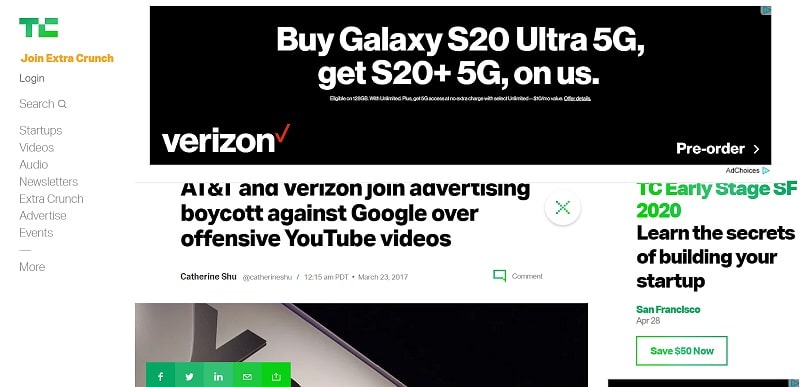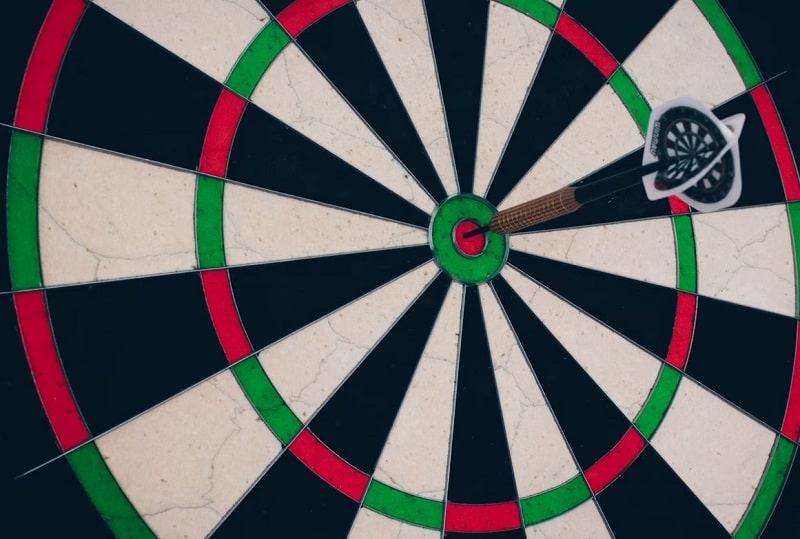For most people, cookies have been a silent part of using the internet for as long as they can remember.
With their usage tracing back to 1994, these little pieces of code stored on users’ computers to identify them uniquely are used for a variety of purposes. These include tracking website visitors, improving the user experience by saving things such as passwords and shopping cart information, and collecting data to create targeted ad campaigns.
But with Google’s announcement that they will be phasing out third-party cookies by 2023, the way cookies and ad-tracking tools that rely on third-party data will be used in the future is set to change dramatically.
While this shift is a big one, not everyone will be affected equally by it, with marketers that run targeted ad campaigns are most likely to feel the biggest impact. Check out our overview below to understand exactly what the third-party cookie phase-out means and what alternatives there are.
An Overview of the Third-Party Cookie Phase-Out
Google first announced its intention to phase out third-party cookies in 2020. They explained in a statement that this was done in response to users requesting greater privacy.
Google initially decided to introduce this change over two years to work with advertisers to ensure that this change wouldn’t destroy the online advertising industry.
While browsers such as Firefox and Safari already block third-party cookies, Google has the largest market share, accounting for approximately 65% of the browser market share worldwide.
Thanks to the combined market share of Google Chrome, Firefox, and Safari, Google’s phase-out of third-party cookies has been called “the death of third-party cookies” in the media.
Although the initial timeline for third-party cookies going away was March 2022, this date has been extended to late 2023 due to the complexity of the change, with Vinay Goel, privacy engineering director for Chrome, saying in a statement that “while there’s considerable progress with this initiative, it’s become clear that more time is needed across the ecosystem to get this right.”

6 Things to Know About Google’s Cookie Phase-Out
1. Google isn’t banning all cookies
Although Google’s third-party cookie phase-out will greatly impact online advertising, you don’t have to worry about all cookies going away.
If you have a website that uses first-party cookies to gather basic user data about your visitors, these cookies will remain safe. In fact, Google called first-party data “vital” going forward, meaning you’ll be able to rely on this data going forward.
We’ve gone into a bit more detail below if you’re still a little confused about the difference between first-party cookies and third-party cookies.
First-Party Cookies
A first-party cookie is a unique piece of code that gets stored on your website visitor’s devices when they first visit your website. This type of cookie is often used to improve the user experience by storing login information, preferences, and other basic info.
With first-party cookies, you are able to gather basic analytics about your visitors, such as what visitors did on your website, how often they visit, and other data that you can use to steer your marketing efforts and automations. However, first-party cookies don’t allow you to track your visitors across the web.
To track your first-party cookie data, you can use the analytics dashboard of your CMS. This will give you access to basic user data such as the number of web sessions, clicks per visit, basic browser information, geographic data, and referring websites, if applicable. What this data doesn’t tell you, however, is what your visitors are doing elsewhere online.
Third-Party Cookies

Third-party cookies are bits of tracking code that websites other than your own have put on your visitors’ devices allowing them to track them on your website and across the web, and sending this information back to the owner of the third-party cookie, which can be advertisers.
For advertisers, third-party cookie data enables them to determine what visitors are doing across the web, including which websites they visit, purchases they make, and which websites they’ve shown an interest in. This data allows advertisers to create accurate visitor profiles so that they can build retargeting lists to target ads at previous visitors or people with similar profiles.
In simple terms, this means that if you’re just looking to track what the visitors to your website are doing and collect basic data about them, you have nothing to worry about.
On the other hand, if you require in-depth data to build targeted digital advertising campaigns, then you’ll need to keep an eye on the updates Google is sharing about their progress while also looking for alternative solutions that rely on first-party data instead.
2. The Third-Party Cookie Phase-Out Isn’t A Surprise
Although seemingly shocking, it’s no surprise that third-party cookies are going away. The landscape has slowly been shifting as web users demand increased user privacy.
In reaction to this, many governments worldwide have begun implementing various strategies to crack down on data privacy issues. A significant ruling, known as GDPR, was when Europe’s highest court mandated that all web users in the EU give active consent to analytics cookies before visiting a website, or the third-party cookies cannot be placed on the user’s device.
This means websites can no longer rely on implicit opt-ins where a banner displays the fact that cookies will be stored. Instead, the user first has to give their consent.
To allow advertisers to continue serving ads to the right audiences while responding to increased demands for user privacy, Google says it is developing what it calls a Privacy Sandbox. Google describes this Privacy Sandbox as “a secure environment for personalization that also protects user privacy.”
The Privacy Sandbox will move user data into Google Chrome for storage and processing, a privacy-preserving strategy. For websites and advertisers to still serve relevant ads, the data shared through Privacy Sandbox will be minimized by anonymously aggregating user information.
Between Google’s Privacy Sandbox and the GDPR, it is clear that changes in technology and regulations would likely have made the third-party cookie obsolete without it needing to be phased out. This means that the advertisers and marketers who are heavily reliant on such data have been looking into alternatives for some time already.
3. Data isn’t the only issue
Apart from the inconvenience that blocking third-party cookies will have, some marketers are questioning whether Google’s phase-out of third-party cookies is purely because of user-privacy concerns.
After the phase-out, you will still be able to target consumers via Google Ads, which doesn’t rely on third-party cookies but instead pulls data from its data as well as the Privacy Sandbox.
Ad platforms and tools that rely on third-party data won’t have access to this information, meaning that they will take a major hit once third-party cookies have been phased out. The concern is that while this may be good for consumer privacy, it will also mean that advertising budgets previously allocated to third-party platforms will now go to Google.
This concern has been voiced in a joint statement by the Association of National Advertising and the American Association of Advertising Agencies which said “Google’s decision to block third-party cookies in Chrome could have major competitive impacts for digital businesses, consumer services, and technological innovation.”
4. Google will keep tracking people
While no longer tracking individuals using third-party cookies, Google will continue to track users through other technologies such as its Privacy Sandbox and FLoC technology that tracks groups of people instead of individuals.
“Our latest tests of FLoC show one way to effectively take third-party cookies out of the advertising equation and instead hide individuals within large crowds of people with common interests,” Google explained in an announcement.
5. Third-Party Data vs. Third-Party Cookies
There is an important distinction that needs to be made between third-party cookies and third-party data.
While Google will block third-party cookies, this does not mean that businesses will stop collecting data about visitors’ behavior beyond their website.
Instead, they will collect this third-party data from sources such as membership cards, loyalty programs, email subscribers, social media insights, and more.
6. Google Analytics will still work
According to privacy regulations, Google Analytics cookies are considered third-party cookies. This means that when Google phases out third-party cookies in Chrome, those cookies will no longer work.
Luckily, Google says that the new version of Google Analytics will not rely on third-party cookies, instead using machine learning to analyze customer journeys and gather other analytics.
4 Alternatives to Third-Party Cookies
1. Create Contextual Advertising and Content

The end of third-party cookies means that advertisers can no longer target ads and will have to rely on other digital advertising strategies. One such strategy is contextual advertising, which fell out of favor when targeted ads rose to prominence.
With contextual advertising, the ads shown to users are based on what is shown on your screen. In other words, the ads are related to the content you are viewing, which makes them much more relevant and a lot less creepy than the targeted ads that seem to follow you around the web.
Google AdSense offers tools for creating contextual ads, allowing you to place image, video, and text ads on the pages of participating sites. This means that you can put your content in front of a new audience who might not actually be searching for you.
If you’re relying on contextual targeting rather than behavioral targeting, you’ll have to ensure that your content is relevant to your target audience. While people hate ads, they love to be informed and entertained and don’t mind special offers while this is happening.
2. Focus on People-Based Targeting

The rise of mobile has made it difficult to track behavior across devices as most mobile devices don’t accept third-party cookies.
On top of that, cookies are device-specific. If a user switches between their phone and computer, or even just between different browsers on the same device, this cannot be tracked, affecting the retargeting lists. This lack of data can lead to retargeting people who have already converted on another device.
People-based advertising is a concept introduced by Facebook that aims to fill this gap. It relies on a unique identifier related to the user, not their device. People-based advertising aims to create a marketing system centered around the customer and based on real-time behavioral data combined with first-party data to allow brands to target customers in real-time and meet them in the time and place where they want to engage with them.
A successful people-based marketing strategy contains three elements:
- Identification: Customers need to be identified and connected to their various devices and channels. This is important as the incorrect tracking of the customer journey can lead to incorrect assumptions about their behavior and ultimately bad marketing campaigns.
- Data: Brands need to dig into the vast stores of data they have on customers, from historical data such as purchase history and engagement to real-time data such as what is in their cart and pages they browsed. Bringing this data together gives you a unified view of your customer.
- Automation: Once the first two elements are firmly established, people-based targeting can take the place of third-party data in marketing automation. With all data available in one place, brands get a complete overview of their customer, allowing them to automate their marketing across channels using a unified marketing strategy.
One thing to note is that while this strategy is relatively simple for brands such as Facebook thanks to the vast amounts of first-party data they have on their users, for brands with limited data this strategy could prove challenging to implement as successfully as third-party cookie-based ones.
3. Value First-Party Data More Than Ever
As the above strategy shows, with third-party cookies going away, first-party data is going to be even more important than ever. While businesses may lag far behind big brands such as Facebook, Google, or Amazon when it comes to this kind of data, the truth is many of them have more than they think.
Another reason why first-party data is so valuable is because unlike third-party data that has been bought, the consumer information contained in first-party data is that of interested parties and respects consumer privacy.
Businesses will need to be thorough in collecting data, ensuring that they track their customers via as many touchpoints as possible.
4. Support Unified ID 2.0
Unified ID 2.0 is the advertising industry’s response to third-party cookies going away and is supported by large ad exchanges such as Xandr and The Trade Desk.
The aim of Unified ID 2.0 is to create an identifier for users while maintaining their privacy, looking to replace cookies.
With Unified ID 2.0, users log into a website with their email address, and an identifier is created using an anonymized version of that address, with the identifier regularly regenerating to maintain security.
Related Content
- How to Target Facebook Ads From an Email Address and Phone Number
- How to Create a Targeted Facebook Ad Audience Using Power Editor
- 12 Reasons Why Google Ads Will Help You Reach New Customers
- 15 Low-Cost Alternatives to Paid Advertising
- The Science of Optimizing Your Facebook Advertising Campaigns
Wrapping Up
As you can see from the above, Google’s decision to phase out third-party cookies will have a big impact on the digital advertising industry, especially on those marketers tracking consumers with third-party cookies, processing that data to build a visitor profile and then targeting them with ads.
This means that marketers will have to employ new strategies to effectively reach their target audience, such as contextual advertising, people-based targeting, and their own data, or hope that a technology such as Unified ID 2.0 replaces third-party cookies.
What do you think about Google’s decision to phase out third-party cookies? Will it have a major impact on the way you do business? Have you come up with any strategies to deal with this change. Let me know in the comments below.



